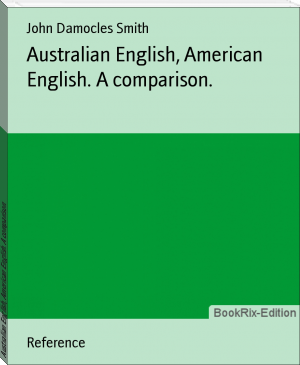Network Terms to Learn - Kalai Selvi Arivalagan (best love novels of all time .TXT) 📗

- Author: Kalai Selvi Arivalagan
Book online «Network Terms to Learn - Kalai Selvi Arivalagan (best love novels of all time .TXT) 📗». Author Kalai Selvi Arivalagan
Because of its nature, linear programming is also called linear optimization.
Database Manager
A database manager (DB manager) is a computer program, or a set of computer programs, that provide basic database management functionalities including creation and maintenance of databases. Database managers have several capabilities including the ability to back up and restore, attach and detach, create, clone, delete and rename the databases.
Automata-Based Programming
Automata-based programming is a type of programming where any part of the codebase represents a finite state machine or similar automaton. The automaton will generally have a variety of states, and will only exist in one particular state at a given time.
Chief Analytics Officer (CAO)
The chief analytics officer (CAO) is an executive within a company or business who is in charge of data strategy, with a specific focus on data analytics. The chief analytics officer may lead a data analytics strategy or determine how analysis gets done, with regard to the tools and resources used, any outsourcing, and any other aspects of the actual data analytics that gets done on valuable business data sets.
Automatic Identification and Data Capture (AIDC)
Automatic identification and data capture (AIDC) refers to the method used to identify objects through computing algorithms. For example, bar codes, radio-frequency identification (RFID), biometrics, magnetic strips, optical character recognition (OCR), smart cards and voice recognition technologies all include algorithms identifying objects captured using a still image capturing system, audio or video.
Behavioral Analytics
Behavioral analytics are a subset of business analytics which focus on finding out how and why people behave the way they do when using eCommerce platforms, social media sites, online games, and any other web application. Behavioral analytics take business analytics’ broad focus and narrows it down, which allows one to take what seem to be unrelated data points and then extrapolate, determine errors, and predict future trends. All of this is done through data exhaust that has been generated by users.
Apache Drill
Apache Drill is an open-source program that enables the interactive analysis of bulk datasets present on different computers. The primary function of Apache Drill is the distributive application of data analysis and data storage. Drill enables the joining of a single data entity with multiple datastores and applications. Apache Drill is an industrial-scale database engine and is extremely developer and user friendly.
Fuzzy Logic
Fuzzy logic is a logic operations method based on many-valued logic rather than binary logic (two-valued logic). Two-valued logic often considers 0 to be false and 1 to be true. However, fuzzy logic deals with truth values between 0 and 1, and these values are considered as intensity (degrees) of truth. Fuzzy logic may be applied to many fields, including control systems, neural networks and artificial intelligence (AI).
Graph Database
A graph database is a type of NoSQL or non-relational database, which is a type of database suitable for very large sets of distributed data. Instead of using tables like those found in relational databases, a graph database, as the name suggests, uses graph structures with nodes, properties and edges in order to represent and store data. A graph database is also known as a graph-oriented database.
Zettabyte
A zettabyte (ZB) is a unit of digital information storage used to denote the size of data. It is equivalent to 1,024 exabytes or 1,000,000,000,000,000,000,000 bytes.
R Programming Language
R is a programming language that is primarily used for statistical computing and graphics. It is available for free. Users can compile and run R on various operating systems including Windows, Mac OS X and Linux. The language is known to be fairly unconventional compared to popular software development languages such as C++ or Java. What makes R stand out from most other languages is that it acts as an interactive statistical environment. R also allows underscores as variable characters, unlike other languages that use them as assignment operators. R is popular among data scientists.
Machine Learning
Machine learning is an artificial intelligence (AI) discipline geared toward the technological development of human knowledge. Machine learning allows computers to handle new situations via analysis, self-training, observation and experience. Machine learning facilitates the continuous advancement of computing through exposure to new scenarios, testing and adaptation, while employing pattern and trend detection for improved decisions in subsequent (though not identical) situations. Machine learning is often confused with data mining and knowledge discovery in databases (KDD), which share a similar methodology.
Decision Theory
Decision theory is a study of an agent's rational choices that supports all kinds of progress in technology such as work on machine learning and artificial intelligence. Decision theory looks at how decisions are made, how multiple decisions influence one another, and how decision-making parties deal with uncertainty. Decision theory is also known as theory of choice.
Greenwashing
Greenwashing refers to a marketing makeover in which a product is presented as more environment friendly when no substantial effort has been taken to make it so. In a more extreme sense greenwashing may refer to an attempt to make a product that is environmentally damaging appear to be environmentally friendly. Greenwashing plays upon a renewed consumer interest in protecting the environment.
Rainbow Table Attack
A rainbow table attack is a type of hacking wherein the perpetrator tries to use a rainbow hash table to crack the passwords stored in a database system. A rainbow table is a hash function used in cryptography for storing important data such as passwords in a database. Sensitive data are hashed twice (or more times) with the same or with different keys in order to avoid rainbow table attacks.
Geotagging
Geotagging is the process of adding metadata that contains geographical information about a location to a digital map. The data usually consists of latitude and longitude coordinates, but may also include a timestamp, as well as links to additional information. Geotag metadata can be added manually or programmatically. In Google Maps and similar GPS services, geotagging may also be referred to as dropping a pin. Pins can be tagged with contextual information to share information about a specific physical location. Popular types of contextual info include photos, videos, website URLs and QR codes. The red icon above is called a pin and its use on a digital map indicates that a location that has been geotagged. End users can view a pin's additional metadata by hovering their finger or mouse over the icon.
Data Lake
A data lake is an easily accessible, centralized storage repository for large volumes of structured and unstructured data. A data lake has a flat architecture and uses object storage to store data. Data lakes play an important role in helping data scientists visualize and analyze data from disparate data in their native formats. In data science, this is an especially important consideration when the scope of the data -- and its uses -- may not yet be fully known.
Although data lakes offer strong data access benefits, they require a management component to help users find the most relevant data, understand relationships and integrate heterogeneous data sources. Popular data lake platforms include:
CoreLAKE -- a commercial, off-the-shelf (COTS) data lake platform for healthcare organizations.
Qubole -- an open source data lake platform for machine learning and ad hoc analytics.
Azure Data Lake -- built on Hadoop YARN and optimized for the cloud.
AWS Lake Formation -- allows users to access a centralized data catalog that describes available data sets and their appropriate usage.
A data lake may also be referred to as a schema-agnostic or schema-less data repository.
Term of the day - 32
Training Data
The idea of using training data in machine learning programs is a simple concept, but it is also very foundational to the way that these technologies work. The training data is an initial set of data used to help a program understand how to apply technologies like neural networks to learn and produce sophisticated results. It may be complemented by subsequent sets of data called validation and testing sets. Training data is also known as a training set, training dataset or learning set.
Deconvolutional Neural Network
A deconvolutional neural network is a neural network that performs an inverse convolution model. Some experts refer to the work of a deconvolutional neural network as constructing layers from an image in an upward direction, while others describe deconvolutional models as "reverse engineering" the input parameters of a convolutional neural network model. Deconvolutional neural networks are also known as deconvolutional networks, deconvs or transposed convolutional neural networks.
Linear Discriminant Analysis
Linear discriminant analysis (LDA) is a type of linear combination, a mathematical process using various data items and applying functions to that set to separately analyze multiple classes of objects or items. Flowing from Fisher's linear discriminant, linear discriminant analysis can be useful in areas like image recognition and predictive analytics in marketing.
Random Walk
The random walk is a somewhat popular mathematical construct that is used in computer science, and now in machine learning. It is described as a "stochastic" process because it works through the application of random variables. The random walk essentially tracks incremental steps by a particular modeled intelligence or digital "rational actor."
Natural Language Generation
Natural language generation (NLG) is a particular AI-complete task that involves generating language from non-language inputs. Some experts might refer to a natural language generation application as a "translator" of text or other informational formats into spoken language.
Data Matching
Data matching describes efforts to compare two sets of collected data. This can be done in many different ways, but the process is often based on algorithms or programmed loops, where processors perform sequential analyses of each individual piece of a data set, matching it against each individual piece of another data set, or comparing complex variables like strings for particular similarities.
Iris Flower Data Set
The Iris flower data set is a specific set of information compiled by Ronald Fisher, a biologist, in the 1930s. It describes particular biological characteristics of various types of Iris flowers, specifically, the length and width of both pedals and the sepals, which are part of the flower’s reproductive system. The Iris flower data set is now widely used as a data set for testing purposes in computer science.
Machine Binding
Machine binding is a software-binding or licensure-stopping software that works to prevent the software from being used on multiple computers. Mechanisms for machine binding include building serial numbers into hardware that can be accessed and matched to serial numbers within the software to provide an authorization match. Machine binding ties a licensure to a specific machine or user and is used for digital software distribution. It also prohibits changes in the system installed on a particular computer. Licensing activities can include the machine binding process. Machine-bound software can be highly tamper resistant.
Machine Code
Machine code (MC) is the executable instruction code provided by all running computer system programs and applications. MC language is a low-level code interpreted and converted from high-level source code and understood only by the machine. Machine code is transported to the system processor when a specific task, application or program executes even the smallest process. Machine code is also known as machine language (ML).
Wasserstein GAN
The Wasserstein GAN (WGAN) is an algorithm introduced in a paper written by Martin Arjovsky, Soumith Chintala and Léon Bottou at the Courant Institute of Mathematical Sciences. The paper examines methods for unsupervised learning, and provides part of the roadmap for dealing with the pursuit of certain outcomes in machine learning projects.
Validation Set
In machine





Comments (0)